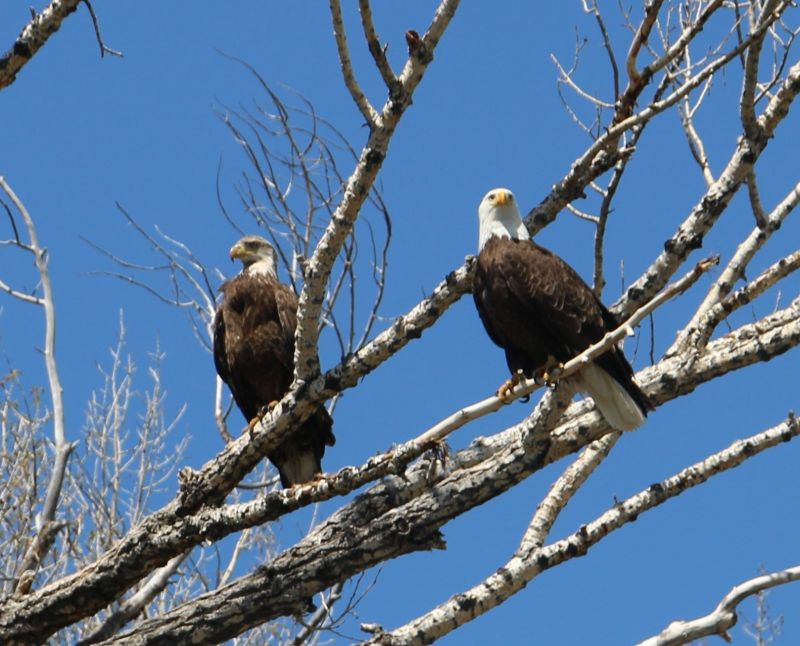Bald Eagle Winter Night Roost and/or Communal Roost Stipulations (BEWNR) begin November 15 and end March 15. Bald Eagle Winter Night and Communal Roost locations vary and often depend on available foraging opportunities and wind direction. Colorado Parks and Wildlife defines an eagle roost as “groups of or individual trees that provide diurnal and/or nocturnal perches for less than 15 wintering bald eagles; these trees are usually the tallest available trees in the wintering area and are primarily located in riparian habitats.” Roost locations can range from 1-30 acres in size and are typically found in wetlands and riparian areas near drainages, leeward slopes, and groves of large trees that provide perching and protection.
Call 2DOT to assist with identifying active BEWNR locations and determine the best monitoring plan for your development. CO Office: 303.953.2255
Colorado Parks and Wildlife recommend the following seasonal and spatial restrictions for BEWNR:
-No human encroachment between November 15th – March 15th within 0.25 mile buffer of active roosts WITHOUT a direct line of sight from activity.
-No human encroachment between November 15th – March 15th within 0.5 mile buffer of active roosts WITH a direct line of sight from activity.
Colorado Parks and Wildlife recommend the following seasonal and spatial restrictions for BEWNR habitat in Highly Developed Areas (10 occupied structures exist within 0.25 mile):
-No human encroachment between November 15th – March 15th within 0.125 mile buffer of roosts WITHOUT a direct line of sight from activity.
-No human encroachment between November 15th – March 15th within 0.25 mile buffer of roosts WITH a direct line of sight from activity.
* If maintenance work to an existing facility is required within this BEWNR buffer zone, activity should occur from 10:00-14:00 hours November 15th – March 15th.

